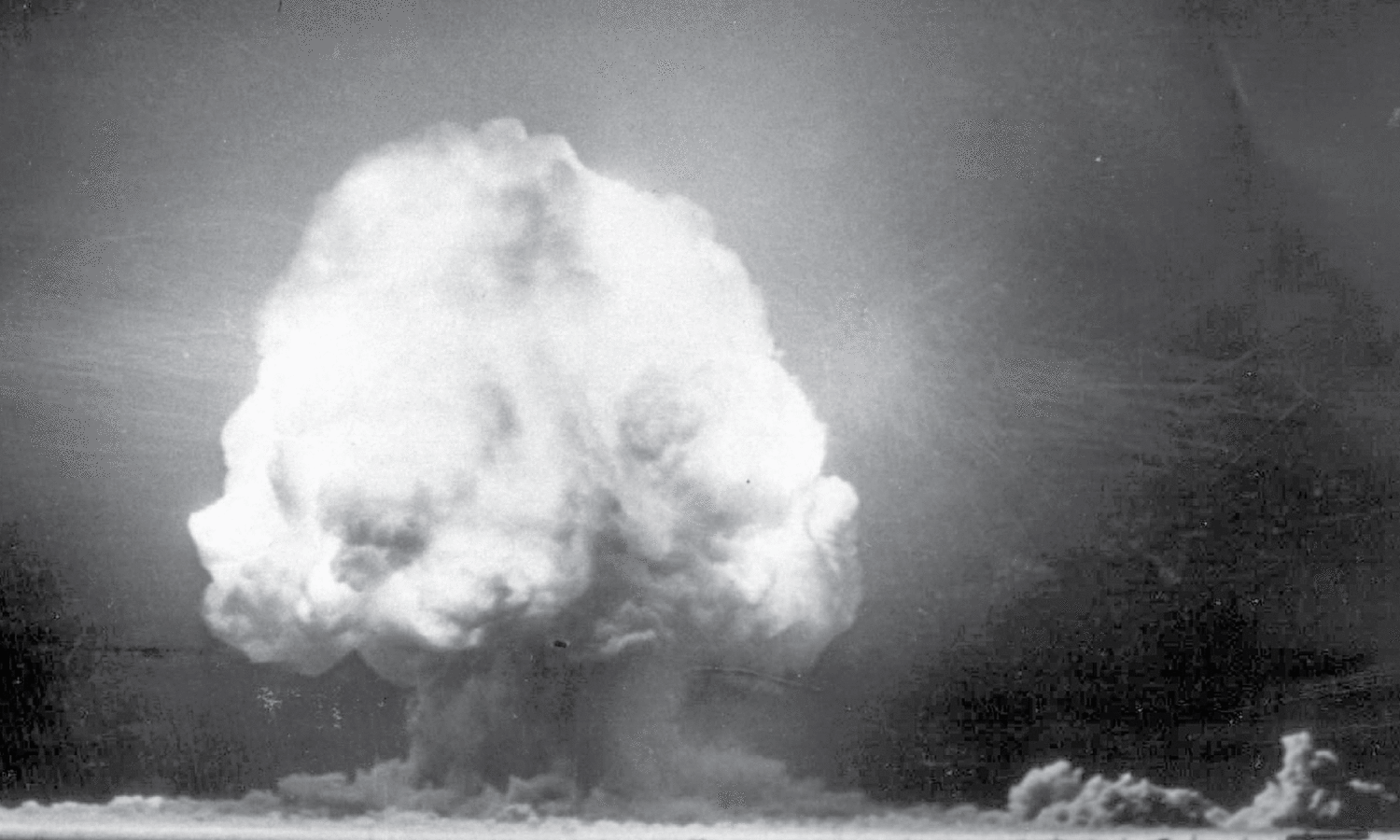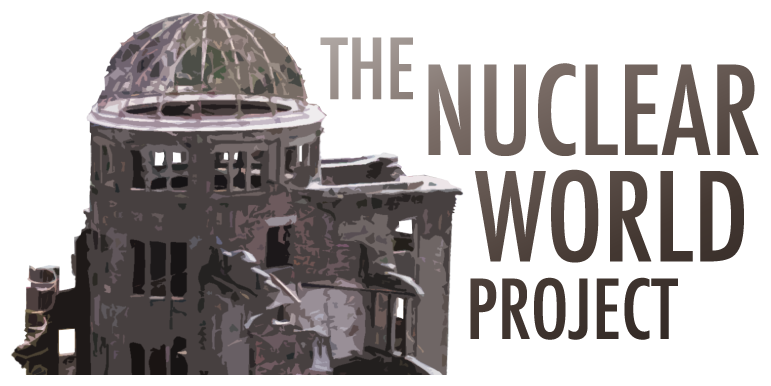
EDUCATE
Articles & Speeches
3 Nuclear Superpowers, Rather Than 2, Usher In a New Strategic Era
China is on track to massively expand its nuclear arsenal, just as Russia suspends the last major arms control treaty. It augurs a new world in which Beijing, Moscow and Washington will likely be atomic peers.
HONORARY LIFETIME ACHIEVEMENT AWARD WINNERS
Robert E. Frye
Robert E. Frye is an Emmy award-winning producer of network news programs and independent documentaries for over five decades. He was born in Syracuse, NY USA, and studied political science and history at Hobart College. In 1958 he joined the U.S. Army. Frye worked on nuclear weapon planning while serving in Germany. The experience fostered a lifelong interest, which led him to create "The Nuclear World Project“.
” The following commentary by Dr. Rebecca Johnson, Executive Director of The Acronym Institute for Disarmament Diplomacy on the Second Conference of the Humanitarian Impact of Nuclear Weapons ”
http://www.opendemocracy.net/5050/rebecca-johnson/banning-nuclear-weapons-point-of-no-return
Second International Conference on the Humanitarian Impact of Nuclear Weapons
Delegations representing 146 States, the United Nations, the International Committee of the Red Cross, the Red Cross and Red Crescent movement and civil society organizations, participated in the Second Conference on the Humanitarian Impact of Nuclear Weapons held in Nayarit, Mexico, on 13 and 14 February 2014, to discuss global and long term consequences of any nuclear detonation, accidental or deliberate, from the perspective and concerns of the 21st century society, including areas such as public health, humanitarian assistance, the economy, development and environmental issues , climate change, food security and risk management, amongst others.
http://www.sre.gob.mx/en/images/stories/cih/ci.pdf
http://www.sre.gob.mx/en/index.php/humanimpact-nayarit-2014
http://www.opendemocracy.net/5050/rebecca-johnson/banning-nuclear-weapons-point-of-no-return
Syracuse native’s documentary explores history, future of nuclear weapons
Not long after Bob Frye graduated from Fayetteville-Manlius High School in 1957, he entered the army where he worked on nuclear weapons. More than half a century later, he’s educating the public on the history and future of humanity’s gravest threat.
Article related to the footage filmed in
Hiroshima and Nagasaki
My Lifetime uses footage from the documentary film The Effects of the Atomic Bombings on Hiroshima and Nagasaki, the only film shot immediately after the war, while the cities were still deserts of debris, the wounds were fresh, and the thousands suffering from radiation sickness were still alive. Here’s how historian Abe Mark Nornes describes the 22 minute film that was supressed for decades (original source link):
President Eisenhower’s “Atoms for Peace” Speech
Before the General Assembly of the United Nations on Peaceful Uses of Atomic Energy
Madame President, Members of the General Assembly:
When Secretary General Hammarskjold’s invitation to address this General Assembly reached me in Bermuda, I was just beginning a series of conferences with the Prime Ministers and Foreign Ministers of Great Britain and of France. Our subject was some of the problems that beset our world.
CONTINUE READING
Military Industrial Complex Speech, Dwight D. Eisenhower, 1961
My fellow Americans:
Three days from now, after half a century in the service of our country, I shall lay down the responsibilities of office as, in traditional and solemn ceremony, the authority of the Presidency is vested in my successor.
This evening I come to you with a message of leave-taking and farewell, and to share a few final thoughts with you, my countrymen.
The Beginning: The Trinity Blast
July 16, 1945
05:29:45
Mountain War Time
On July 16, 1945 the first atomic bomb exploded. The bomb known as “The Gadget” had been hoisted to the top of a tower the evening
before. The explosion vaporized the tower and the sand beneath the blast turned to glass. Today a crater and obelisk marks the Trinity site in the desert of southern New Mexico. “I am become Death, the destroyer of worlds.” Physicist J. Robert Oppenheimer, the Scientific Director of the top secret Manhattan Project thought of this quote from the Bhagavad-Gita as he saw the flash of light, followed by sound and wind, followed by the first telltale signs of a mushroom cloud forming on the early morning horizon. Standing beside Oppenheimer was the Test director Kenneth Bainbridge “Now we are all sons of bitches”. There was a pride of their scientific achievement, but it was also the beginning of the struggle among many there as they reflected on the consequences of the weapon they had created. “The lighting effects beggared description. The whole country was lighted by a searing light with the intensity many times that of the midday sun. It was golden, purple, violet, gray, and blue. It lighted every peak, crevasse and ridge of the nearby mountain range with a clarity and beauty that cannot be described but must be seen to be imagined” General Thomas Farrell observed at the Trinity site.
Historical Publications Related to the Film
Confronting the Bomb: A Short History of the World Nuclear Disarmament Movement
Lawrence S. WittnerHiroshima
Book by John HerseyJapanese Documentary Film The Meji Era through Hiroshima
Documentary by Abe Mark NornesThe Bells of Nagasaki
Book by Takashi NagaiThe Voice of the Dolphins
Book by Leo SzilardThe World Set Free
Book by H.G. WellsVolume 1: The Struggle Against the Bomb: One World or None: A History of the World Nuclear Disarmament Movement Through 1953
Volume One of Lawrence Wittner’s three volume history on nuclear disarmamentVolume 2: The Struggle Against the Bomb : Resisting the Bomb – A History of the World Nuclear Disarmament Movement, 1954-1970
Volume Two of Lawrence Wittner’s three volume history on nuclear disarmamentVolume 3: Toward Nuclear Abolition: A History of the World Nuclear Disarmament Movement, 1971-Present
Volume Three of Lawrence Wittner’s three volume history on nuclear disarmament
Nuclear Explosions
1945- The United States uses atomic bombs on the Japanese cities of Hiroshima and Nagasaki.
1949- On 29 August, the Soviet Union became the second state to detonate a nuclear device.
1949- According to its defense doctrine of November 1949, NATO defense plans call for insuring “the ability to carry out strategic bombing including the prompt delivery of the atomic bomb. This is primarily a US responsibility assisted as practicable by other nations.”
The First Atomic Bomb Detonation
On July 16, 1945 the first atomic bomb was set off, the bomb had been hoisted to the top of a small tower the evening before, the explosion vaporized the tower and the sand beneath the blast turned to glass. Today a crater and obelisk marks the Trinity site in the desert of southern New Mexico. “I am become Death, the destroyer of worlds.” Physicist Robert Oppenheimer, the director of the top secret Manhattan Project thought of this quote from the Bhagavad-Gita as he saw the flash of light, followed by sound and wind, and the first telltale signs of a mushroom cloud forming on the early morning horizon. Standing beside Oppenheimer was the Test director Kenneth Bainbridge “Now we are all sons of bitches”.
Profile of the artist: Isao HASHIMOTO
Born in Kumamoto prefecture, Japan in 1959.
Worked for 17 years in financial industry as a foreign exchange dealer. Studied at Department of Arts, Policy and Management of Musashino Art University, Tokyo.
Currently working for Lalique Museum, Hakone, Japan as a curator.
Created artwork series expressing, in the artist’s view, “the fear and the folly of nuclear weapons”:
CONTIUE READING
Interviews & Podcasts
PBS doc 'In Search of Resolution' delves into global efforts to promote nuclear disarmament
Peace & Health Blog
A conversation with filmmaker Robert Frye
Educational Media Reviews Online
A review of
In Search of Resolution 2022
Documentary on the Debate with Nuclear Weapons and Eliminating the Atomic Threat.
Broadcast of the documentary aired on Thursday, July 18th at 9pm on WTVS in Detroit.
Director and Producer of In My Lifetime Robert E. Frye speaks with Craig about the documentary that shares the history of nuclear weapons. In My Lifetime features moments in our history as well as current issues regarding nuclear weapons.
World Affairs Council of Pittsburgh Interviews Bob Frye
Pittsburgh KQV Global Press Conference is the Council’s weekly radio show. The half-hour program reaches over 45,000 listeners per week. Program topics and/or times are subject to change.
To hear the interview with Bob Frye, click here.
Bob Frye on The Campbell Conversations
Bob Frye is the producer and director of a new documentary on the nuclear arms race and disarmament. Frye is a former producer for ABC News. In this conversation with Grant Reeher, he discusses his personal motivations for the film and whether we’ve lost touch with the dangers posed by nuclear arsenals.
Hear the interview here
WGVU
Shelley Irwin
April 23, 2013 | WGVU This Sunday at 5 pm, WGVU TV presents In My Lifetime, a documentary that asks whether nuclear disarmament can ever be achieved. We speak with filmmaker Robert Frye.
WCCO, Minneapolis, Minnesota
Interview with John Hines
The John Hines Show
April 11, 2013
Thursday, April 11, 2013
Interview with Melissa Ross
WJCT
Jacksonville, Florida













